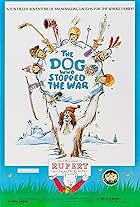La mystérieuse Mademoiselle C. for mbdb
PhR 9-4-02
Amélie Poulain in the classroom
Mademoiselle C. is a wonderful children's film (2nd to 7th grade), without fancy digital work and without a massive budget, so the scenes look real, not Disney-squeaky-clean-and-cute. It's so well done adults will enjoy it as much, as soon as they accept it *is* a children's film. Teens? I don't know.
Beside the reasonable budget, there are two main reasons the film works so well. First, it rests on the shoulders of its Amélie Poulain, Mademoiselle Charlotte, and Marie-Chantal Perron is fully up to the task. This is one big bet that fully comes through.
Second, the script was written by Dominique Demers, a children's book writer, and, instead of removing material, she shoehorned two of her books into it. The success of this second big bet rests on the shoulders of Demers and the director, Ciupka. The result is that no second is wasted, every scene barely has the time to say what it has to say and then something else interesting comes on the screen.
This means that the film weaves many threads together, each of which is an interesting story in itself. One such thread shows what happens in a single-child family when the mother has had a stroke and remains in a long-term-care hospital paralyzed and unable to speak (but almost). That thread takes up about five minutes of the film through a dozen scenes or so, and is so well done it's worth the price of admission. A one-second shot, for instance, shows the gratitude in the father's eyes when he glances sideways at his daughter's first love, who's coming in with emotional support where, up to that point, the girl looked to him for everything.
The main story tells how a substitute teacher turns around a sixth-grade class which the principal is set on treating as a hopeless case. (He's a megalomaniac and gets his just deserts.) The best point comes at the end when Mademoiselle C. makes herself scarce because the kids should just trust themselves, they've discovered how.
The film's greatest flaw is in its messages. "Smoking is bad" is said exactly the way we all know the message won't go through. "Reading is a door to new worlds", the main message, is said just right, only... how can you say that to kids today and not mention Harry Potter as the demonstration? (Which the producers obviously can't because the copyright belongs to the Unfriendly Giant, AOL-Time-Warner.)
Depending on age or attention, children may or may not catch on to the many threads, but it doesn't matter, they'll catch on to as many as they need to have a great time and lots to remember.



















